It’s been about 2 months since I left Gallaudet and Washington D.C. I look back at the experience with a great sense of gratitude. When friends and family ask how my summer was in past years, my usual reply would be, “It was great!” This year, however, I found myself saying, “It was fruitful.”
It was fruitful because it was an experience that challenged and changed me. Being immersed in the language and culture of a people who are often invisible, yet surround us, has allowed me to become more sensitive to human difference beyond racial and ethnic tropes that dominate narratives about “human diversity” today. The Deaf literally taught me how to see differently. I saw how language and culture do not exist apart from how people are made—biology and culture are two sides of the same coin. I saw how visual language could say things that oral and written language would never adequately express; it makes one think differently. Best of all, I saw possibilities for a society that enables, rather than disables, that is, the possibility of radical hospitality.
There have been some things I’ve missed since my return. I miss not having to use my voice at 8 a.m. As an introvert, I was pleasantly surprised by how much I enjoyed communicating with my hands at that hour. I also miss being able to communicate with a friend across the room without having to yell and attract unwanted attention—this happens more often than one might think! Most of all, I miss worshipping in ASL, which I got to do for 6 weeks at St. Francis of Assisi Catholic Church in MD. I am grateful to this welcoming community for inspiring me to write this theological reflection on recent debates about ways of praying at Mass (part II can be found here).
My initial motivation for going to Gallaudet was to learn more about Deaf culture and improve my ASL so I may do ethnographic research at Deaf Catholic Churches. I am pleased to say that I gained all that and more. But so that I retain what I learned over the summer and gain more fluency in the language, I am now auditing an advanced ASL course at Bethel College and have been attending local Deaf events. I also intend to start an “ASL language table” at Notre Dame to share what I’ve learned and promote the language.
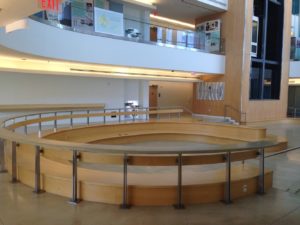
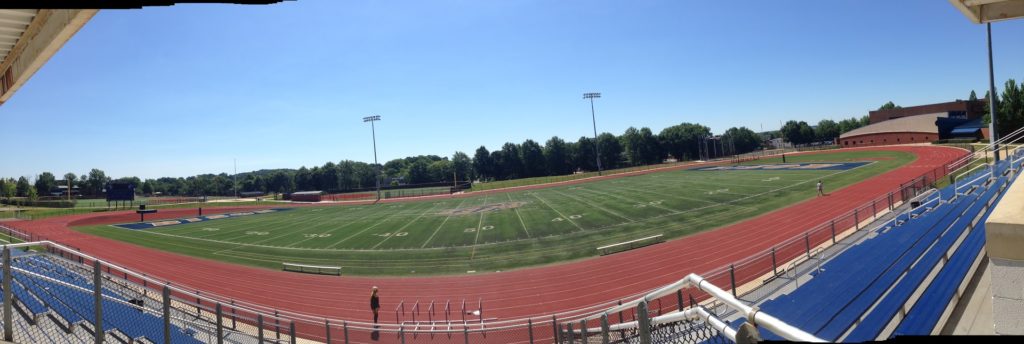
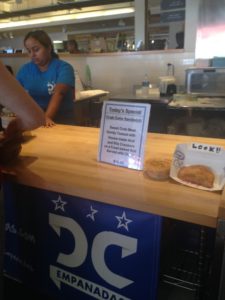



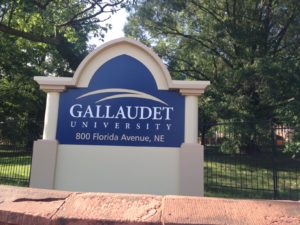 I arrived at Gallaudet University at about 7pm yesterday, after a long 2-day drive from South Bend. As I drove through the gates of the university, I was greeted by banners that said, “Gallaudet University – There is No Other Place Like This in the World.” I must admit feeling a little nervous as I entered the campus. There is indeed no other place like this in the world. Gallaudet is the only Deaf university in the world where American Sign Language is the vernacular. As I pulled up to the guard post, a cheerful African American security guard greeted me in ASL. I didn’t know if she could hear, so I signed “I NEW HERE. DORM WHERE?*” It occurred to me that this was it. I was geographically entering a Deaf World!
I arrived at Gallaudet University at about 7pm yesterday, after a long 2-day drive from South Bend. As I drove through the gates of the university, I was greeted by banners that said, “Gallaudet University – There is No Other Place Like This in the World.” I must admit feeling a little nervous as I entered the campus. There is indeed no other place like this in the world. Gallaudet is the only Deaf university in the world where American Sign Language is the vernacular. As I pulled up to the guard post, a cheerful African American security guard greeted me in ASL. I didn’t know if she could hear, so I signed “I NEW HERE. DORM WHERE?*” It occurred to me that this was it. I was geographically entering a Deaf World!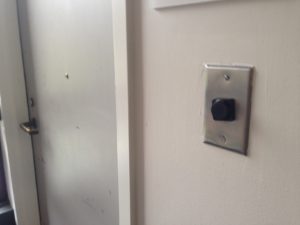 I haven’t had a chance to explore the campus yet, but hope to do so soon. Thus far, I’ve been struck by how similar the campus
I haven’t had a chance to explore the campus yet, but hope to do so soon. Thus far, I’ve been struck by how similar the campus